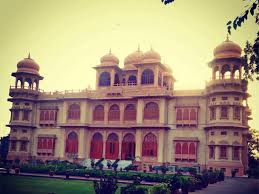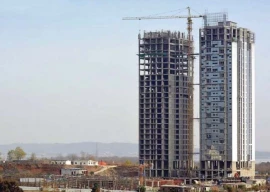
The session, titled 'The Politics of Interior Design: From the Viceroy's House to Rashtaprati Bhavan', was delivered by Prof Naman P Ahuja.
From the emblems of Union Jack and the late King George V to how the Indians loathed the colonial setup that the British left behind and Mahatma Gandhi's assertion at the time of independence that 'this place be turned into a hospital, for all the wounds inflicted can now heal', Ahuja, a professor of Indian art and architecture at Jawaharlal Nehru University, New Delhi, candidly spoke on the survival of the palatial house through the times. "As suspicious as the Indians were of the governing Englishmen in that day and age, so were the Englishmen of the Indians," stated Ahuja.

Lutyens, a man who referred to the Taj Mahal, as a 'biscuit box', was the one who designed the Viceroy's House, which became the Rashtaprati Bhavan (presidential house) after India's independence.
Lutyens was well-equipped in his thought-process of giving detail to the minutest of factors, explained Ahuja. "However, Indians are now giving the house a different look, with the head of the government making sure that it be 'Indianised' to the core with a fashionable art decor," said Ahuja.
From the separately marked quarters for the Indian and British servants to the various columns he created in the place, it was a task that required no less amount of pressure for an architect to model, he said.
"It was also a place that, back in the day, Indians recognised and looked up to," remarked Ahuja. However, he shared that when the British left the subcontinent, the house was a place of terrible embarrassment for the two initial presidents of India.
Though the various marks exhibiting late King George V have now disappeared, some signs of the British rulers who once governed India still remain.
"It is more of a faded memory in the form of a door-knob, a lamp, spider-back chairs and more," said Ahuja.
"This place no doubt is design worthy. It draws from the aesthetics and tastes of Lutyens, from orthodox to radically modern styles, where you can find many signs, not just conforming to one religion but delving into diversity, commented Ahuja, adding that the building has stood the test of great foresight.
Published in The Express Tribune, August 31st, 2016.






1614423942-7/-ET-Burns-Road-by-Athar-Khan-(8)1614423942-7-270x192.webp)










COMMENTS (1)
Comments are moderated and generally will be posted if they are on-topic and not abusive.
For more information, please see our Comments FAQ